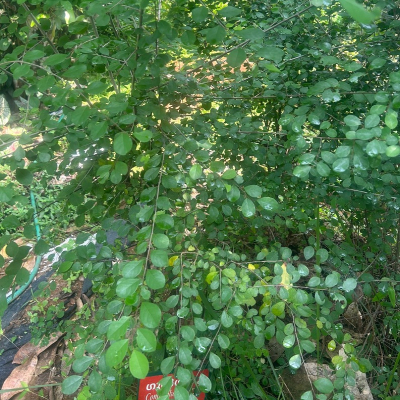Botany: Small armed tree with spinescent branches and ash-coloured rough bark, peeling off in flakes, young parts glandular, pubescent
- Leaves: Alternate, 1-3 foliate, obovate, serrate toothed in upper parts
- Flowers: Small, brownish red
- Fruits: Ovoid drupes, red when ripe.
Chemical constituents: The gum resin contains guggul sterones Z and E, guggul sterols I-V, cembrene A and mukulol. Major components from essential oil of gum resin are myrcene and dimyrcene. Flowers contain quercetin and its glycosides as major flavonoid components, other constituents being ellagic acid and pelargonidin glucoside.
Properties: The gum is acrid, bitter, astringent, thermogenic, aromatic, expectorant, digestive anthelmintic, anti-inflammatory, anodyne, depurative, antiseptic, nervine tonic, demulcent, aphrodisiac, liver tonic and anti- spasmodic.
Uses: It is a versatile indigenous drug claimed by ayurvedists to be highly effective in the treatment of rheumatism, obesity, neurological and urinary disorders, tonsillitis, arthritis and a few other diseases.
Agrotechnology
Soil and climate: Guggal being a plant of arid zone thrives well in arid subtropical to tropical climate. Though they prefer hard soil, they are found over sandy to silt loam soils, poor in organic matter but rich in several other minerals in arid tracks of western India. The rainfall in the guggul growing tract may average between 100 mm and 500 mm while air temperature may vary between 40°C in summer and -3°C during winter.
Propagation: Plants are propagated through seeds or stem cuttings. Plants are best raised from stem cuttings from the semi-woody branch. For this purpose one metre long woody stem of 10 mm thickness is selected and the cut end is treated with IBA or NAA and planted in a well-manured nursery bed during June-July months. The beds should be given light irrigation periodically. The cuttings initiate sprouting in 10-15 days and grow into good green sprout in 10-12 months. These rooted plants are suitable for planting in the fields during the next rainy season. The cuttings give 80-94% sprouting usually. Air layering has also been successfully attempted and micro propagation techniques are also available. Seed germination is very poor (5%) but seedling produce healthier plants.
After cultivation: The rooted cuttings are planted in well laid-out fields during rainy season. Pits of size 0.5m3 are dug out at 3-4 m spacing in rows. FYM is mixed with filler soil and the seedlings are planted. Care should be taken to protect the new plants from white ants damage.
Manuring: Generally, the plant does not respond to fertilizers except to low level of nitrogen in very poor soils.
Aftercultivation: Removal of side branches and low level of irrigation supports good growth of these plants. The plantation does not require much weeding and hoeing. But the soil around the bushes should be pulverised twice in a year to increase their growth and urea or ammonium sulphate at 25- 50 g per bush should be applied at a time and irrigated.
Plant protection: Cercospora leaf spot and bacterial leaf blight were noticed to cause damage. Against leaf spot, spray 1% Bordeaux mixture. A leaf eating caterpillar (Euproctis lanata Walker) and White fly (Bemisia tabaci) are the important pests reported and can be controlled by spraying contact insecticides.
Harvesting: Stem or branch having maximum diameter of about 5 cm at place of incision, irrespective of age is tapped. The necrotic patch on the bark is peeled off with a sharp knife and Bordeaux paste is applied to the exposed surface of the stem or branch. A prick chisel of about 3 cm width is used to make bark-deep incisions. If tapping is successful, gum exudation ensures after about 15-20 days from the date of incision and continues for nearly 30-45 days. A piece of polythene sheet can be pouched around the place of incision to collect gum. Alternatively, a polythene sheet can be spread on the ground to collect exuded gum. A maximum of about 500g of gum has been obtained from a plant. The best grade of guggul is collected from thick branches of tree. These lumps of guggul are translucent. Second grade guggul is usually mixed with bark, sand and is dull coloured. Third grade guggul is usually collected from the ground, which is mixed with sand, stones and other foreign matter.



